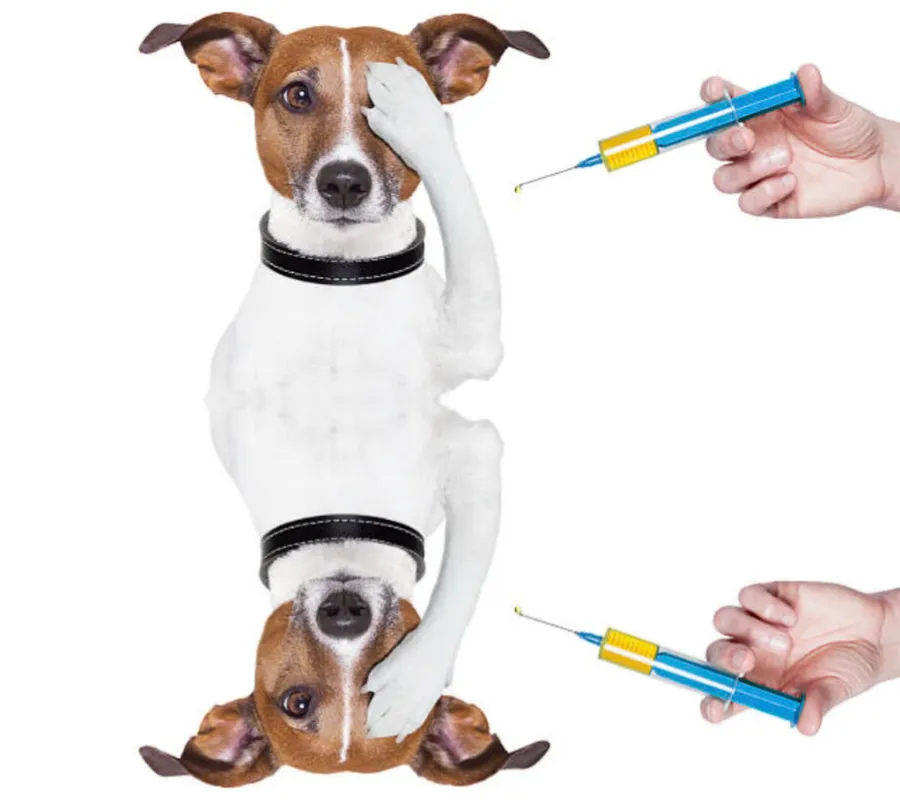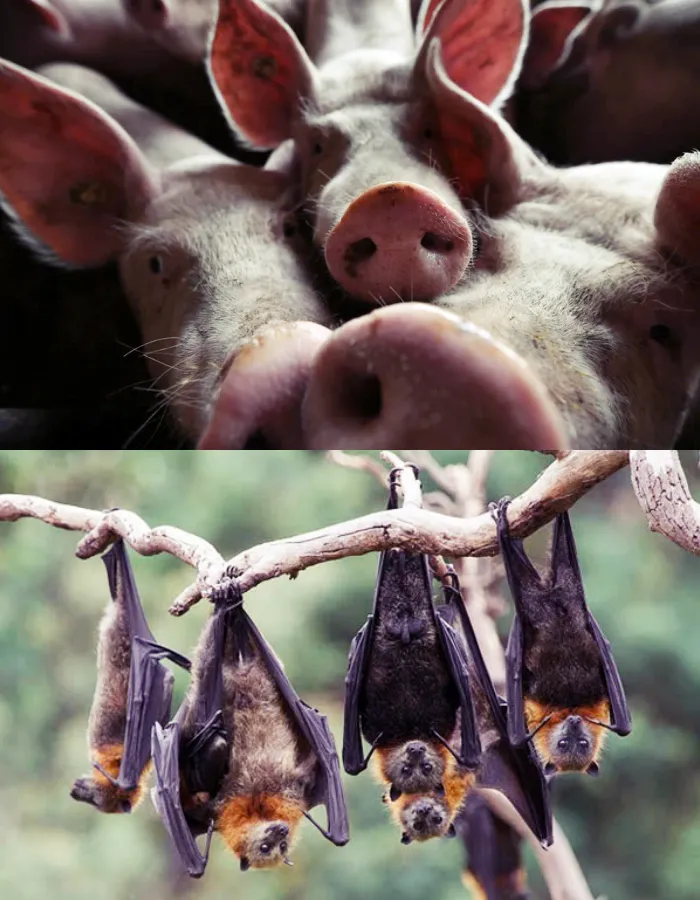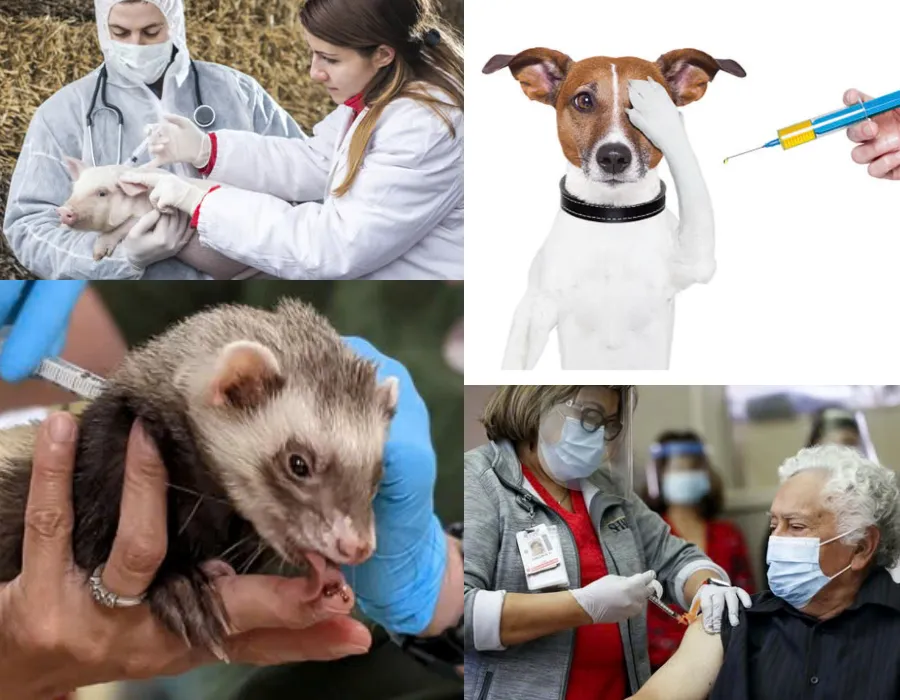
Some of the most deadly diseases to humans, such as HIV/AIDS and COVID-19, originated in animals. Recent research has shown that viruses spill over not only from animals to humans, but also the other way around. For example, the virus that causes AIDS jumped from chimpanzees to humans, while the virus that causes COVID-19 is believed to have originated in bats. At the same time, humans also spill over diseases to animals. This cross-species crossover is becoming increasingly evident and important in understanding and preventing infectious diseases.

Humans Pass Twice as Many Viruses to Animals: Surprising Finding
According to Reuters, a new study has revealed a surprising finding: humans actually pass twice as many viruses to animals as animals pass them to us. Researchers analyzed nearly 12 million virus genomes and found nearly 3,000 instances of viruses jumping from one species to another. Of these, 79% involve viruses that spread from one animal to another, while the remaining 21% involve humans. Notably, 64% of the 21% are viral diseases that spread from humans to animals, while 36% are zoonotic.
Animal species affected by viruses from humans include pets such as cats and dogs, domesticated animals such as pigs, horses and cattle, birds such as chickens and ducks, primates such as chimpanzees and gorillas, and wild animals such as raccoons and African soft-shelled rats. Research shows that wild animals are at a higher risk of catching viruses from humans than they are of infecting humans.
“This really highlights the huge impact that humans have on the environment and animals around us,” said Cedric Tan, a PhD student in computational biology at the University College London Genetics Institute and lead author of the study published in the journal Nature Ecology & Evolution.
Multiple Pathways for Viruses: From Animals to Humans and Back
Humans and animals are hosts to a wide range of bacteria and viruses that can be transmitted between species through close contact. Recent research has looked at virus transmission between all groups of vertebrates, including mammals, birds, reptiles, amphibians and fish. Viruses can spread between species through similar methods to humans, such as direct contact with infected fluids or being bitten by another species, said Cedric Tan, a PhD student in computational biology at the University College London Genetics Institute. However, before a virus can jump to a new host, it needs to acquire special biological adaptations to enter the cells of its new host.
For millennia, pandemics that have killed millions of people have been caused by pathogens such as viruses, bacteria and fungi that come from animals. Zoonosis is a major concern when it comes to dangerous emerging infectious diseases. Francois Balloux, director of the UCL Genetics Institute and co-author of the study, said the vast majority of pathogens circulating in humans have been transmitted from animals at some point. He pointed to the H5N1 avian influenza, which is currently circulating in wild birds, as an example of a major threat from animals.
The 14th century “Black Death”, when a bacterial plague killed millions of people in Europe, Asia, the Middle East and North Africa, was caused by a bacterium that normally circulates in wild rodents. Current threats, such as the Ebola virus, also come from animals. It is largely believed that SARS-CoV-2, the agent that causes COVID-19, likely originated in horseshoe bats and jumped to humans, Tan says, although outbreaks of SARS-CoV-2 have also been documented in pet mink infected by humans.
However, not all species-to-species virus transmission is important. “In most cases, such transmissions lead nowhere, because the virus is poorly adapted and there is no subsequent transmission to a new host,” Balloux says.

Conclusion
“In some cases, viruses can start to spread, causing epidemics, pandemics, or even endemic pathogens of their own. Small animal outbreaks are probably quite common, even if we miss most of them, but developing into full-blown epidemics is a rare event, evolutionarily speaking,” Balloux stressed. While zoonotic outbreaks, while likely to be quite common, often go undetected, developing into a full-blown epidemic is rare and requires complex evolutionary factors.
A deeper understanding of how viruses spread and their adaptive mechanisms will not only help us predict and control future outbreaks, but also strengthen our ability to protect public health. As we continue to study and monitor these events, increased awareness and preparedness will be key to minimizing the impact of infectious diseases globally.



